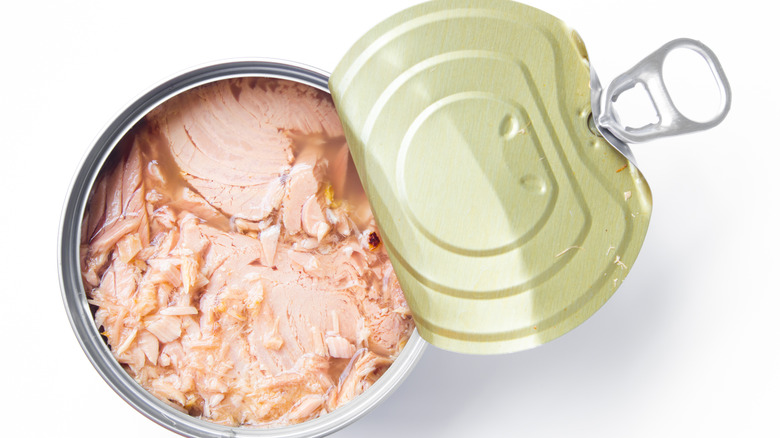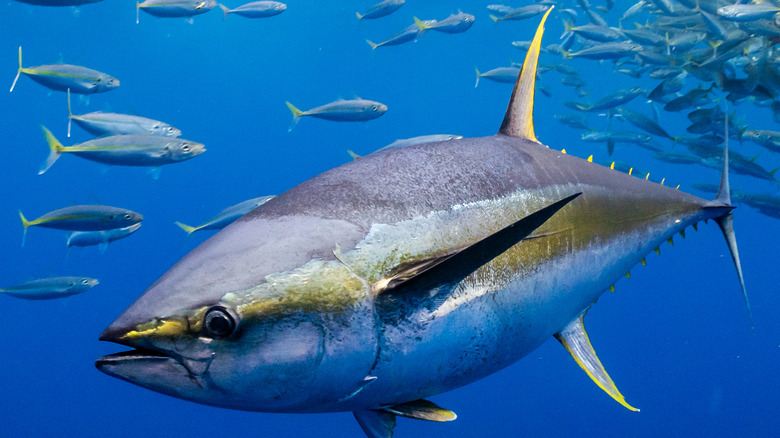The Canned Tuna Variety That Makes Up At Least 75% Of U.S. Sales
Believe it or not, tuna is tied with salmon as the second most-consumed seafood in the U.S.; and, in case you were interested, shrimp easily captures first place (per the National Oceanic and Atmospheric Administration). That's quite a position for tuna to be in considering that, at the turn of the 20th century, it was deemed a "trash fish," according to Smithsonian Magazine, quoting Trevor Corson, the writer behind "The Story of Sushi."
In fact, if you're a coffee drinker or fan of sugar, you might be amazed to know that canned tuna is surpassed only by those two products in terms of sales per foot of shelf space in the average supermarket — and more than half of American households surveyed admit to eating it monthly, with 17% enjoying it on a weekly basis (per the National Fisheries Institute). A lot of this is owed to the fact that tuna is a particularly versatile ingredient, lending itself to be doused with Kewpie on a sandwich, baked in a casserole, liberally sprinkled with corn kernels on pizza, or even dusted with cocoa powder.
And canned tuna is pretty healthy, too, plus it's a cheaper alternative to salmon if you're trying to increase your intake of Omega-3s — the fatty acids inside fish that are beneficial to the entire body — not to mention a good source of protein, vitamin D, and vitamin B 12 (per WebMD). But, which kind of tuna is the most popular and is it safe to eat mass quantities?
Everyone loves a good skipjack, but proceed with caution
Among all the types of tuna, which one reigns supreme? The most popular type of canned tuna is none other than chunk, light meat — mostly skipjack tuna for you ichthyologists — housed in water; it represents up to 75-80% of all canned tuna sales, according to the National Fisheries Institute. What's more, Americans eat roughly 16 pounds of seafood every year, with nearly four pounds of that from cans or pouches, and a further two-thirds of that amount being tuna (via FoodPrint).
But yet, in spite of its meteoric rise to the top of canned food's greatest hits, tuna remains associated with three insidious red flags that might make you question eating it regularly. Due to naturally-occurring mercury in the earth's surface that seeps into worldwide bodies of water, smaller fish unintentionally ingest the poisonous element, which in turn gets consumed by tuna fish (per Healthline) that then affect human consumers.
Though skipjack and canned light tuna are relatively low in mercury, you might want to avoid albacore, yellowfin, and bigeye tuna if this is a concern. Furthermore, avoid tuna cans that might contain Bisphenol A (BPA), a substance which may lead to high blood pressure, infertility, and birth defects (via Eat This, Not That!). Per the U.S. Food and Drug Administration, it's ideal to limit your consumption to two to three servings of tuna per week to avoid health issues.

